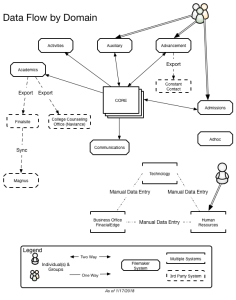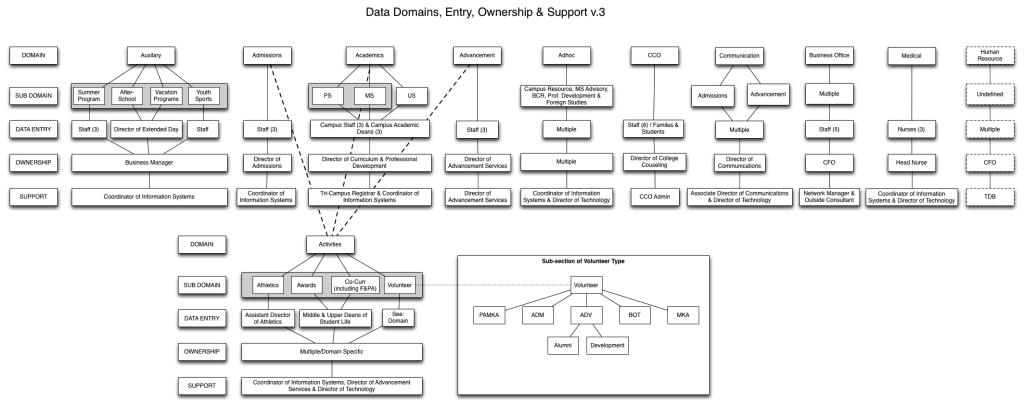We’ve all seen it, that moment when you start talking to people about a topic and you know they have no idea what you are talking about or don’t understand half of the words coming out of your mouth.
You get that blank stare…
While sometimes it can be confused as being deep in thought you need to be sure. You need to know you have people engaged and involved in the conversation.
When talking about data, in particular data management within your institution this can often be tricky. While people count on using data every day and rely on the accuracy of it, they often don’t see it as their problem to solve or something to concern themselves with.
This is often where the problem starts, talking about data practices and understanding how to deal with the issue around data management. You need a plan to get people engaged, invested and involved in the conversations without getting that blank stare.
Here are five suggestions for starting your conversations around data management:
Get the key players to the table
What do I mean my key players? These are the decision makers, the departments leaders, the administrator in each of the respective areas/domains: admissions, academics, development, alumni, commutations, business office, auxiliary programs, etc. You want the leaders in these areas, not those doing the work, but those using the work to guide the institution and are making the decisions that have the greatest impact.
While input from those doing the daily work will be important, that input can be used once the wants, needs and problems can be articulate and goals from these management conversation can be made.
Keep it simple
The language and acronyms that are used around data and the processes associated with management (SQL, API, field mapping, etc.) can often be confusing and intimidating. The people around the table need to be guided through the conversation(s) using terms and vocabulary that they can understand and relate to. While you may need to get into the weeds around certain issues, try doing so in a way that minimizes jargon and puts things commonly understood terms and examples.
My background is in early childhood educations and I grew up in a household of teachers (1st and 5th grade)and whenever we would need something explained to use we would say talk to me like I’m a third grader. Try using this idea, in a non-condescending manner, as your guide.
Make it relevant
Have real-life example to work with from actual people in your institution. This means doing a little work before you meeting.
Sit down with people in each of the areas and have conversation and look for examples to better understand their workflow and process. Look for things that are working well and things that might need some help. Having both positive and negative examples will help in the discussions as they will illustrate when good management practices that are in place and when others aren’t.
Use big pictures
We are talking about big ideas and concepts, have big pictures to share. Trying to outline all of the different data systems in the institution and the way that they connect and share information can be difficult. Using charts and graphs can help paint a clearer picture of the issues you are trying to address and the problems you are trying to solve.
Tools like OmniGraffle, ConceptDraw, Visio and even Inspiration can help lay these out for you in a very easy, manageable way.
Set manageable goals and expectations – shared responsibility.
Depending on the scope and depth of the things you are going to address regarding data management you want to be sure to maintain your perspective and the bandwidth you have both individually and as a group to get things done. Remember you are leading this conversation, but it is more than just you at the table and what comes out of these discussions will need to addressed by everyone at the table.
Once you’ve identified your needs, issues and problems have a conversation about who is going to be responsible for what and how you are going to move forward. You will need to divide and conquer as this will help reinforce that idea that you are not the sole person responsible for you institutions data managements goals, that there is a shared responsibility.
IMPORTANT: Be careful with making promises. There are many rabbit holes that you will go down, or be brought down that will divert your focus, be mindful of that. Set regular check-ins (they can be emails) so that all player are kept informed and remind those that have been assigned tasks to be sure to report back as well.
Proper data management within your institution will save you from numerous issues and problems. Having conversations with the key stakeholders is the way in which you can help them understand the issues and needs and will help give you the leverage you need to make real change. Keeping these conversations grounded in real-life examples and in terms that people understand with good visual examples will help you and avoid that blank stare and make real progress.
NOTE: Please see the data management category link to the right for more posts on this topic.





